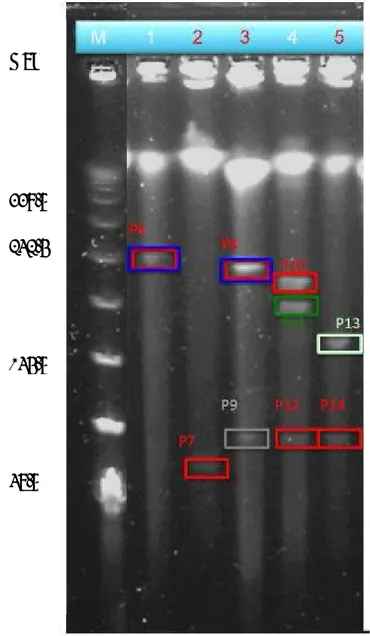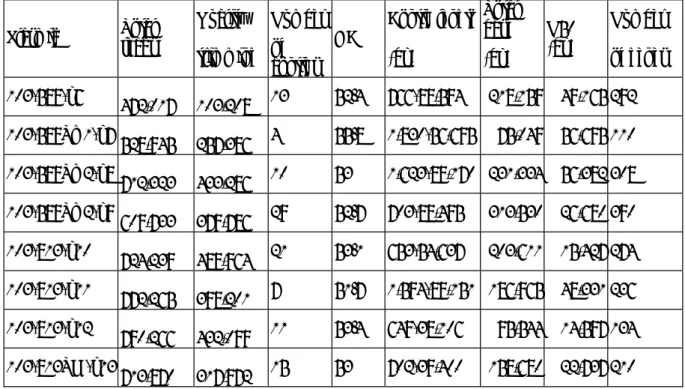Molecular epidemiology investigation for plasmids harboring carbapenemase genes among hospital outbreaks in Taiwan
Centers for Disease Control, Taiwan
Name of researcher: Shiow-Jen Wang1, Makoto Kuroda2, Akifumi Yamashita2, Keigo Shibayama3and Jung-Jung Mu1*
Affiliation:
1Bacterial Enteric and Emerging Diseases Laboratory, Center for Research, Diagnostics and Vaccine Development, Centers for Disease Control, Taiwan
2Pathogen Genomics Center, National Institute of Infectious Disease, Japan
3Department of Bacteriology II, National Institute of Infectious Disease, Japan
Summary:
The emergence and rapid dissemination of carbapenem-resistance Enterobacteriaceae (CRE) has been reported lately in Taiwan. However, the investigation of plasmids responsible for the acquired carbapenamase in a systemic way is still lacking and the role of plasmid played in the hospital outbreaks is not well understood. From the hospital outbreak in central Taiwan in 2014, we select two Klebsiella pneumoniae isolates carrying KPC-2 gene for further NGS analysis, one isolate is resistant to all antibiotics tested, and another isolate carries one additional IMP-8 gene. NGS analysis is performed in the Pathogen Genomics Center, National Institute of Infectious Disease, Japan. The preliminary results showed these two carbapenemase genes are located in the same plasmid; more detailed analysis is required to confirm this novel finding.
I. Purpose:
The spreading of carbapenem-resistance Enterobacteriaceae (CRE) has become a great concern because of the limited treatment options for this specific type of infection (1). Carbapenamase producing, loss of porins, and increasing active efflux pumps are mechanisms involving carbapenem-resistance (2). Among these mechanisms, the acquired carbapenamase is the major contributor of developing resistance and related to outbreaks occurred in hospital. Three main classes of carbapenemases have been identified: Ambler class A beta-lactamase (KPC), class B (metallo-enzymes) which including VIM, IMP, and NDM, and class D (OXA-48 type) (3). Although the emergence of NDM-1 carbapenemase and the increasing incidences of Klebsiella pneumoniae carbapenemase (KPC) have been recently reported in Taiwan (4,5), the investigation of plasmids responsible for the acquired carbapenamase in a systemic way is still lacking and the role of plasmid played in the hospital outbreaks is not well studied. Therefore, the main purpose of this study is to develop a strategy to study and analyze the carbapenemase-producing plasmids related to hospital outbreaks. This study will contribute to the understanding of transmission of plasmids and clonal spreading of carbapenemase-producing Enterobacteriaceae among hospital outbreaks in Taiwan.
II. Methods:
1) Selection of the clinical isolates related to the hospital outbreaks. First, commercial automation Phoenix NMIC/ID panels were used in clinical isolates submitted to our institute in 2014 to recheck the identification of species and results of antimicrobial susceptibility tests. Meanwhile, multiplex PCR was used to amplify the carbapenemase genes, e.g. NDM, KPC, IMP, VIM, and OXA-48 (6). Second, phylogenetic study by Pulsed-field gel electrophoresis (PFGE) was used to demonstrate the occurrence of outbreak or clustering. Also, for some isolates, conjugation (or electroporation) assays were performed.
2) S1- PFGE. Genomic DNA was prepared in agarose blocks and digested with S1 nuclease (Life Technologies, Carlsbad, USA) for 30 min at 37oC. The DNA band of each plasmid was separated by use of a CHEF-MAPPER apparatus (Bio-Rad, Hercules, USA ) for 20 h at 6 V/cm at 14°C with initial and final pulse times of
2.98 and 21.79 s, respectively.
3) Plasmid sequencing and bioinformatics analysis: Plasmid DNA from the selected clinical isolates was extracted by Wizard SV gel and PCR clean-up system (Promega, Madison, USA) according to the manufacturer’s protocol. The plasmids were sequenced in the Pathogen Genomics Center (Japan) by using an Illumina-MiSeq system (Illumina, San Diego, USA). Briefly, NexteraXTTM DNA Sample Preparation Kit (Illumina, San Diego, USA) was used to prepare the randomly sheared plasmid libraries. Individually tagged libraries were sequenced as a part of a flowcell as 2 x 300 base paired-end reads using the Illumina MiSeq system (Illumina, San Diego, USA). Sequencing reads were de novo assembled into contigs and scaffolds by using GPAT platform (Global Plasmidome Analysis Tool) which is developed by Dr. Kuroda in NIID, Japan. Open reading frames (ORFs) were predicted and annotated also by using GPAT platform.
4) Detection of Antibiotic Resistance Genes and Inc type of each plasmid: Blastp searches for all of the plasmid genes against the ARDB + CARD database were performed by using GPAT system (6).
III. Results:
1) Detection of carbapenemase genes in CRE isolates.
In 2014, a total of 1,060 CRE isolates were submitted to our laboratory for confirmation of carrying carbapenemase genes. 263 (24.8%) isolates carrying carbapenemase genes were detected by multiplex PCR (6): 183 (17.26%) isolates carrying KPC, 36 (3.40%) isolates carrying IMP, 23 (2.17%) isolates carrying VIM, 19 (1.79%) isolates carrying OXA-48, and 2 (0.19%) isolates carrying NDM.
Up to date, KPC-producing Klebsiella pneumoniae is the most common carbapenemase-producing Enterobacteriaceae found in Taiwan. One local hospital in central Taiwan submitted 41 CRE isolates, 30 (73%) isolates carrying KPC-2 were detected. Among these KPC-2-KP isolates, one isolate harbored one additional IMP-8 gene. PFGE was performed to analyze the phylogenetic relationship of these KPC-2-KP isolates. The result showed that they were closely related (data not shown). Two isolates were selected for further NGS analysis:
one (103-813) had resistance to all antibiotics tested, and another (103-589)
4
carried two carbapenemase genes (KPC-2 and IMP-8) simultaneously.
2) Plasmids analysis by S1-PFGE.
The plasmids carrying KPC-2 or IMP-8 gene were successfully transfer to DH10B competent E. coli by electroporation. PCR was used to confirm the presence of KPC-2 or IMP-8 gene. To examine the sizes of the plasmids from 103-589, 103-589Tm1, 103-589Tm2, 103-813, and 103-813Tm, genomic DNA was isolated from each isolate, restricted with S1 nuclease, and examined by PFGE (FIG. 1).
FIG. 1. PFGE of plasmids from 103-589 (lane 1), 103-589Tm1 (lane 2), 103-589Tm2 (lane 3), 103-813 (lane 4), and 103-813Tm (lane 5).
Kbp
339.5
242.5
145.5
48.5
3) Sequencing result.
The sequencing run yielded a total of 5,323,658 reads for the different plasmid libraries. After trimming and adaptor removal, the number of total reads dropped to 2,811,902 (Table 1).
TABLE 1. Summary of the sequencing results for each plasmid.
Plasmid Total reads
Quality trimming
Number of contigs
GC%
Contig length (bp)
Total base (bp)
N50 (bp)
Number of genes 103-589-p6
472,017 103,208 13 52.4 766-88,594 218,159 49,165 292 103-589Tm1-p7 528,945 257,386 4 55.8 1,830-56,695 75,049 56,695 110 103-589Tm2-p8 712,323 433,286 10 53 1,623-89,170 231,334 56,382 308 103-589Tm2-p9
609,733 379,786 29 52.7 703-88,495 313,530 26,680 390 103-813-p10 724,239 489,964 21 53.1 653-54,637 203,611 15,427 274 103-813-p11 772,265 398,201 7 51.7 1,594-89,151 186,965 48,331 236 103-813-p12
790,266 432,099 11 53.4 649-38,106 95,544 14,597 134 103-813TM-p13
713,870 317,972 15 53 702-39,400 158,680 22,737 210 4) Antimicrobial resistance (AMR) genes identified and INC type recognized for
various plasmids are shown in Table 2.
TABLE 2. Antimicrobial resistance genes and INC type for each plasmid
Plasmid AMR Genes Inc type
103-589-p6
AacA4 aminoglycoside (6') acetyltransferase (id: 100, cov: 91) blaIMP-8 (id: 100, cov: 100)
KPC-2 (id: 100, cov: 100)
streptomycin 3''-kinase (id: 100, cov: 98)
aminoglycoside 3'-phosphotransferase (id: 100, cov: 100) strA (id: 100, cov: 100)
FII, R, A/C
103-589-Tm1-p7
FosA3 (id: 100, cov: 100) KPC-2 (id: 100, cov: 100) blaSHV-12 (id: 100, cov: 100)
FII, R 103-589Tm2-p8 SHV beta-lactamase (id: 99, cov: 100)
AacA4 aminoglycoside (6') acetyltransferase (id: 100, cov: 91) dihydropteroate synthase (id: 100, cov: 95)
FosA3 (id: 100, cov: 100)
streptomycin 3''-kinase (id: 100, cov: 98) blaIMP-8 (id: 100, cov: 100)
FII, R, A/C
6 strA (id: 100, cov: 100) blacatB3 (id: 100, cov: 100) TEM-67 (id: 99, cov: 100) AacC2 (id: 100, cov: 100)
aminoglycoside 3'-phosphotransferase (id: 100, cov: 100) KPC-2 (id: 100, cov: 100)
103-589Tm2-pla9
blaIMP-8 (id: 99, cov: 91) strA (id: 100, cov: 100)
aminoglycoside 3'-phosphotransferase (id: 100, cov: 100) SHV beta-lactamase (id: 99, cov: 100)
KPC-2 (id: 100, cov: 100)
AacA4 aminoglycoside (6') acetyltransferase (id: 100, cov: 91) streptomycin 3''-kinase (id: 100, cov: 98)
FII, R, A/C
103-813-p10 FosA3 (id: 100, cov: 100)
KPC-2 (id: 100, cov: 100) FII, R
103-813-p11
ampC (id: 100, cov: 100) mel (id: 100, cov: 100) qnrB4 (id: 100, cov: 100)
DfrA12 dihydrofolate reductase (id: 100, cov: 100) aadA2 (id: 100, cov: 100)
dihydropteroate synthase (id: 100, cov: 95) florfenicol exporter (id: 100, cov: 100) folP (id: 100, cov: 90)
armA (id: 100, cov: 100)
A/C
103-813-p12 FosA3 (id: 100, cov: 100)
KPC-2 (id: 100, cov: 100) FII, R
103-813Tm-p13 KPC-2 (id: 100, cov: 100)
FosA3 (id: 100, cov: 100) FII
IV. Discussion:
In conclusion, we found that Klebsiella pneumoniae was the most common isolate carrying carbapenemase genes in this study. This finding is similar to the results of previous reports (5). Furthermore, in this study we identified a KPC-2-KP related hospital outbreak in central Taiwan, which outbreak had thirty KPC-2 positive isolates. Among these isolate, one isolate carries two carbapenemase genes of KPC-2 and IMP-8 simultaneously. From the NGS analysis, preliminary data showed these two carbapenemase genes are located in the same plasmid, which phenomena has
never been reported previously. Of course, more detailed analysis is required to confirm this novel finding.
In this study, we utilize the similar strategies established in Dr. Kuroda’s lab in the pathogen genomic center of NIID. The method developed in Dr. Kuroda's Lab is demonstrated to be a simple, rapid and robust method that can be used for whole genome sequencing of diverse type of plasmids in the same run. This method also can overcome the small amount of genomic DNA extracted from each individual band by using the Nextera XTTM kit. And the GPAT platform in his lab is also a user friendly platform for manual correction for each gene. Antimicrobial resistance genes are easily identified in this platform and the results are compatible with the antibiogram of antimicrobial susceptibility test. However, the optimal condition of S1-nuclease digestion need to be evaluated, over-digestion or insufficient digestion may generate confusing results and may interfere with further interpretation of NGS data.
V. Reference list:
1. Nordmann P, Naas T, Poirel L. Global spread of Carbapenemase-producing Enterobacteriaceae. Emerg Infect Dis. 2011; 17:1791-8.
2. Nordmann P, Dortet L, Poirel L. Carbapenem resistance in Enterobacteriaceae:
here is the storm! Trends Mol Med. 2012; 18:263-72.
3. Queenan AM, Bush K. Carbapenemases: the versatile β-lactamases. Clin Microbiol Rev. 2007; 20:440-58.
4. Lee CM, Liao CH, Lee WS, Liu YC, Mu JJ, Lee MC, Hsueh PR. 2012. Outbreak of Klebsiella pneumoniae Carbapenemase-2- producing K. pneumoniae Sequence Type 11 in Taiwan in 2011. Antimicrob Agents Chemother. 2012; 56:5016-22.
5. Chiu SK, Wu TL, Chuang YC, Lin JC, Fung CP, Lu PL, Wang JT, Wang LS, Siu LK, Yeh KM. National surveillance study on carbapenem non-susceptible Klebsiella pneumoniae in Taiwan: the emergence and rapid dissemination of KPC-2 carbapenemase. PLoS One. 2013;8:e69428
6. Poirel L, Walsh TR, Cuvillier V, Nordmann P. Multiplex PCR for detection of
8
acquired carbapenemase genes. Diagn Microbiol Infect Dis. 2011; 70:119-23.
7. Yamashita A, Sekizuka T, Kuroda M. Characterization of Antimicrobial Resistance Dissemination across Plasmid Communities Classified by Network Analysis. Pathogens. 2014; 3:356-76.
VI. Publication list for this work

